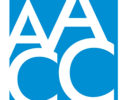Report roundup
By AACC 21st Century Center Staff
October 17, 2024
Here are three reports to know about this month:
Focus on dual enrollment
A new comprehensive study from the Community College Research Center (CCRC) at Columbia University of dual enrollment (DE) shows that the programs yield higher rates of students attending colleges and completing, but there are gaps in access and success for low-income, Black and Hispanic students.
Nearly 2.5 million high school students take DE college courses each year, which are now offered at 90% of public high schools across the country. Community colleges serve about three-fourths of DE students.
While 36% of DE students who enrolled in college within the first year after high school completed a bachelor’s in four years, only 28% of low-income, 29% of Black and 25% of Hispanic dual enrollees did so.
ROI on degrees, certificates
A new report from the California Futures Foundation and the HEA Group examined 260,000 California college graduates across 2,695 undergraduate certificate, associate and bachelor’s degree programs offered at 324 institutions within the state.
It found that 88% of programs allow graduates to recoup their educational costs in five years or less. Nine out of 10 (91%) associate degrees allow graduates to earn back their educational costs within five years. But certificate programs proved risky. For 34% of certificate programs, graduates needed five years or more to recoup their educational costs.
Meeting grads’ expectations about work
Short-term certificate programs can help people land good-paying jobs, but for some program graduates, the job expectation is different from the reality.
Research company Education Equity Solutions (EES) interviewed 100 graduates – mostly Latino and Black – of short-term certificate programs for manufacturing jobs, as well as college personnel and employers. Most of the graduates found work in their preferred manufacturing industry, but many were disappointed with their jobs. Some expressed dissatisfaction with being hired for roles where they had only a slight advantage over high school graduates. They also said pay was low and the work could be dangerous.
The report suggests that colleges can meet learners’ expectations by targeting specific quality jobs. For that to happen, colleges must be attuned to “labor market dynamics to accurately assess which roles are in-demand and meet graduates’ benchmark for quality,” the EES report said.



